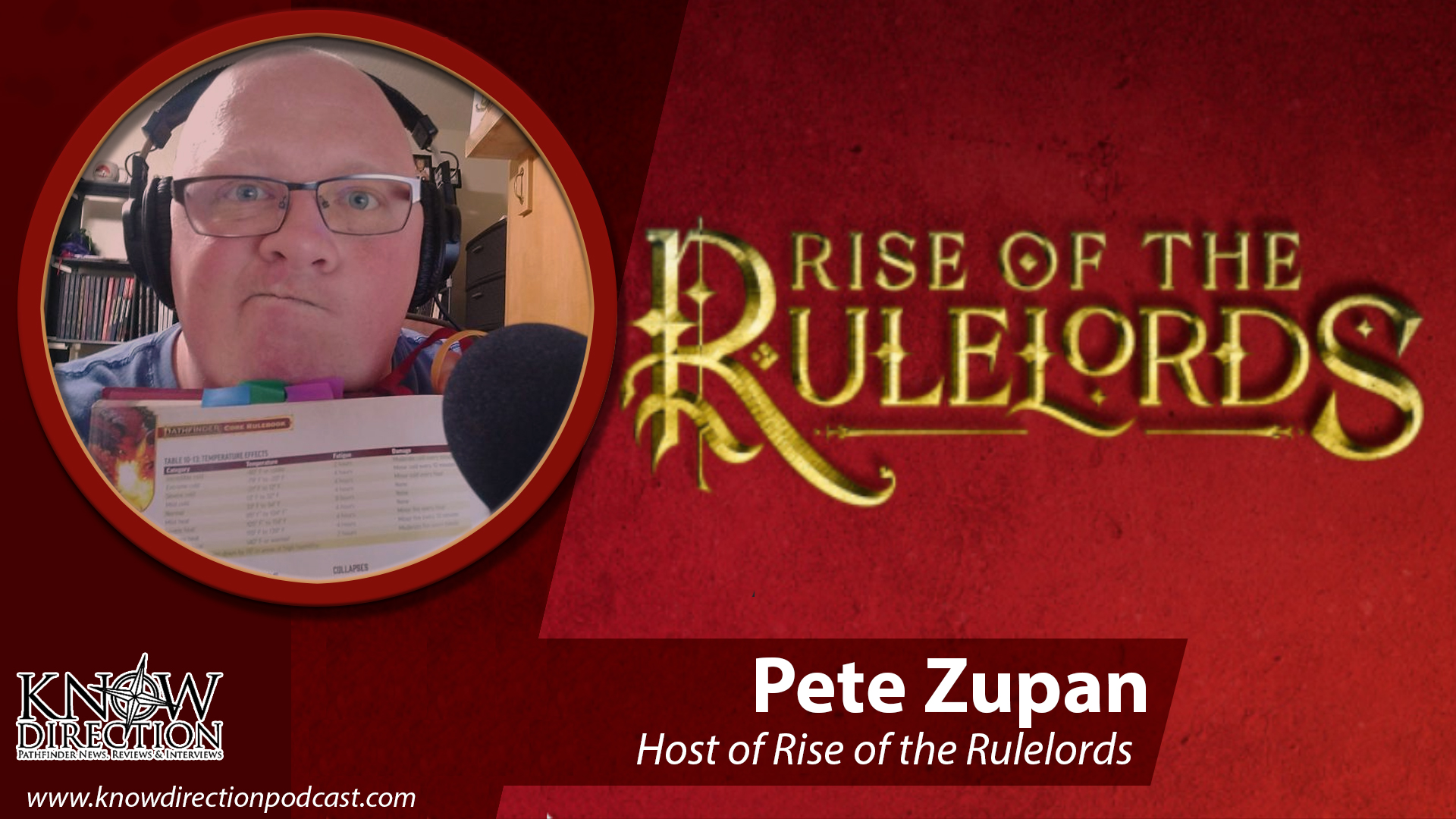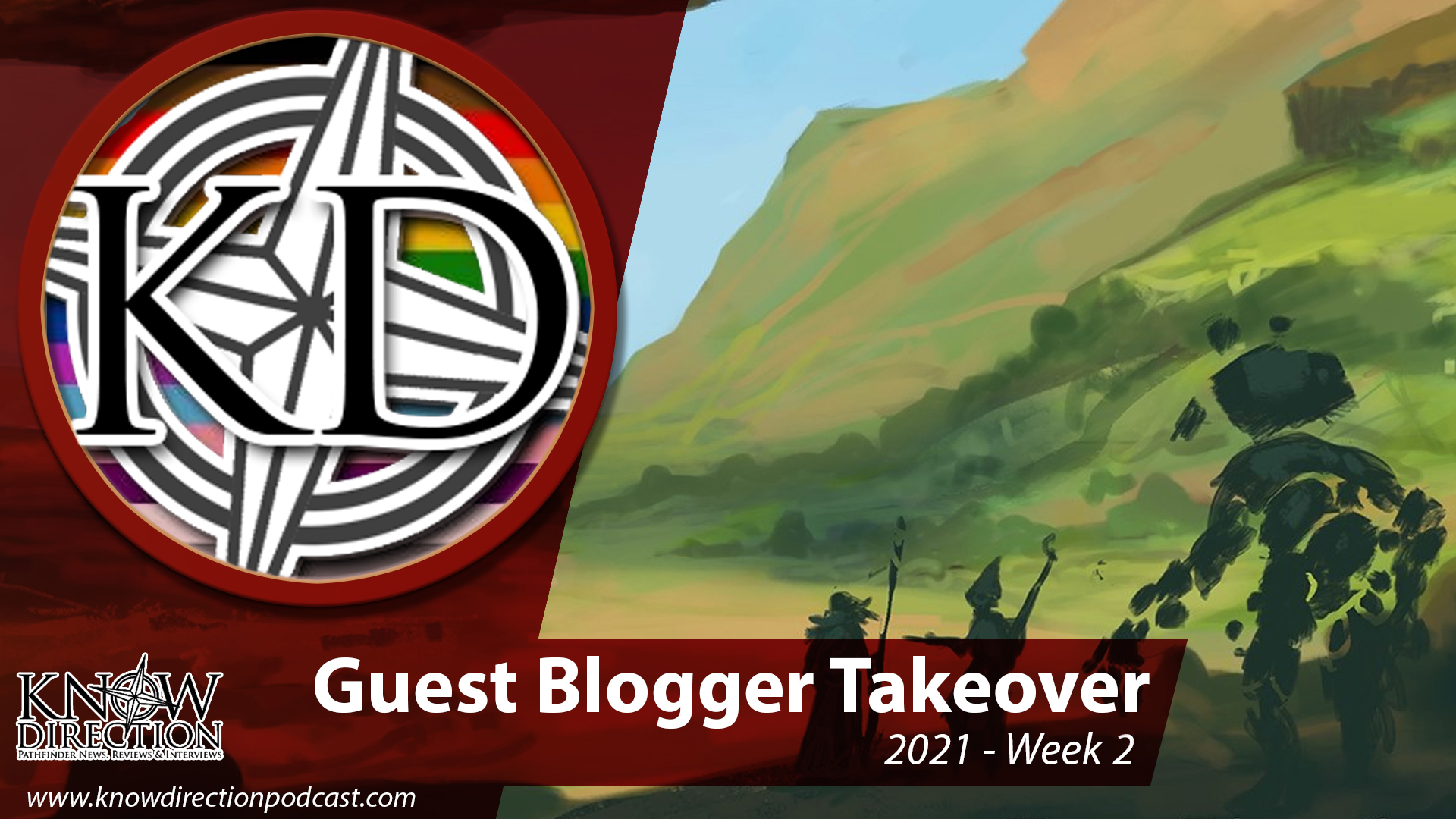Making 2E Adventures Out Of 1E Material
By Pete Zupan, host of Rise of the Rulelords Podcast
I love Pathfinder Second Edition. But I want to play Pathfinder First Edition adventures. 1E has some classic adventures, ones whose outcomes have had drastic effects on the fate of Golarion. We are being treated to a 2E conversion by Paizo for Kingmaker, but what about Reign of Winter? We Be Goblins? The Emerald Spire? For those, we have to convert them ourselves if we want to experience them with all that 2E goodness.
However, 2E is as different a game from 1E as checkers is from chess, and it’s important to acknowledge that it’s impossible to recreate a 1:1 conversion. The two editions are their own unique games meant to be played in their own way. What you should be aiming for is the spirit of the adventure. Does the 1E Hard DC feel challenging in 2E? Does the converted 2E goblin fight feel as difficult as it would be in 1E? Those are much more important considerations than trying to make the numbers match. What I’ll be showing you is how to get as close as possible, quickly and easily, without becoming a full time game designer.
STEP 1: MAP THE ADVENTURE
Converting a 100 page adventure path can seem daunting. Don’t worry though! Most of that is story and art. You only have to convert three things: DC’s, encounters (including hazards), and items. I recommend mapping out the adventure first to see what you really need to convert.
To do this, make a table with four columns. The first two will list the section and page of the stat you’re converting so you can match it to the adventure. The next two columns are where you’ll put the 1E stat and the 2E conversion. I also add columns to track the sourcebook and encounter severity, but that’s optional.
List each stat in the 1E column with the page and section number. You don’t need to read the whole AP, just skim over it and find what you need. Use CRTL+F with “DC” on a PDF to easily find skill checks.
STEP 2: DETERMINE THE PARTY LEVEL
Each adventure has milestone leveling in the front of the book with the level PC’s should be at by each chapter. The party level is the most important factor as we consider how tough challenges should be or how much treasure to give out.
STEP 3: CONVERT DC’s
DC’s might seem like the hardest thing to convert, but they’re actually the easiest. Why? Because I did it for you already. I’ve already made a 1E to 2E DC conversion table using math that you honestly don’t need to worry about. If you’re set on making your own numbers, use 2E’s table 10-5 for level based DC’s and table 10-6 to adjust the difficulty.
Remember that some skills from 1E have been condensed down into a single skill. Disable Device, Escape Artist, and Sleight of Hand would all just be Thievery now. My conversion table also lists suggestions for what those skill checks would be.
STEP 4: CONVERT ENCOUNTERS
With the party level in mind, this is roughly how CR shakes out by slapping Table 12-1 in the 1E CRB and Table 10-1 of the 2E CRB next to each other.
| 1E | 2E | ||
| CR Equals | Difficulty | Threat | XP Budget |
| APL – 1 | Easy | Trivial | 40 or less |
| APL | Average | Low | 60 |
| APL + 1 | Challenging | Moderate | 80 |
| APL + 2 | Hard | Moderate or Severe | 100 |
| APL + 3 | Epic | Severe | 120 |
| APL + 4+ | Legendary | Extreme | 160 |
You’ll note I added 2 rows. This is because 2E Extreme encounters are much deadlier than Epic encounters in 1E. To account for this, we’ll split Hard CR’s into moderate or severe encounters, depending on how generous you feel.
Now you can rebuild your encounter using the 2E XP budget system and search for the same monsters in the 2E Bestiaries. Not every monster has been brought over to 2E, but in the spirit of the game, it’s not hard to find one with a similar feel. I’m a big fan of re-skinning: using a 2E monster stat and just saying it’s something else. Apply the elite or weak adjustment to a creature to make it feel different than something the players might be aware of (psst, the Archives of Nethys can do this automatically for you). Add traits or swap special abilities with another creature for extra spice. For instance, to make a bewitched cauldron, I used a Weak Animated Statue, and then gave it Engulf. Yes, it can be that easy.
STEP 5: CONVERT TREASURE
You can’t convert treasure. It doesn’t work. You might see 10% floating around. This is wrong. You might see a complex equation. This is also wrong. Please, just use 2E’s table 10-9 and redistribute your own treasure. Prices in 1E are wildly different than 2E, and gold doesn’t have a nice exchange rate like DC’s or encounters
Don’t consider lackey loot in your treasure total, because the resale amount players can get from it is negligible. Just focus on big items, like improved weapons, scrolls, wands, etc. If it seems like you need more items to give out, just “purchase” it from the remaining sum of gold from the table. Items are a big factor in the math of 2E, so when in doubt, give an item out. At the end, sprinkle the remaining gold throughout your adventure.
STEP 6: RECREATE ANYTHING ELSE
Each adventure has unique creatures, stats, items, and big bads. Sometimes, you just won’t have something satisfying that exists in 2E to fill that void. In this case, you’ll have to make it yourself. Luckily, the Gamemastery Guide gives good guidance for making all of those. One thing I’ll add is don’t reinvent the wheel. Again, reskinning works, or if needed, use stuff that already exists. If you need a breath weapon, steal the language from a dragon or mephit and just change the damage dice and energy type to fit your new creature. Paizo already did most of the heavy lifting for you, you’re only putting more work on yourself if you don’t utilize it.
—-
For a more in-depth dive into converting 1E adventures, check out my KOBOLDS 2 KOBOLDS guide. Each month, I also release a 2E conversion of a 1E module on the Rise of the Rulelords Patreon for free!






